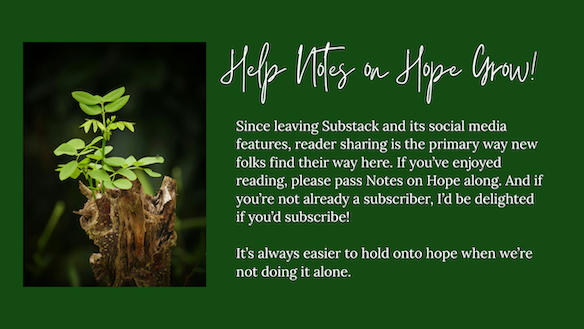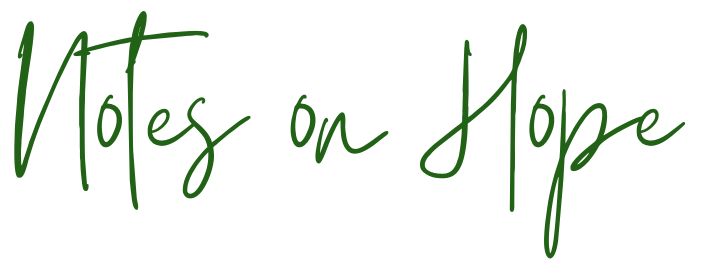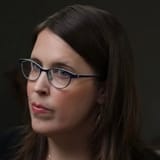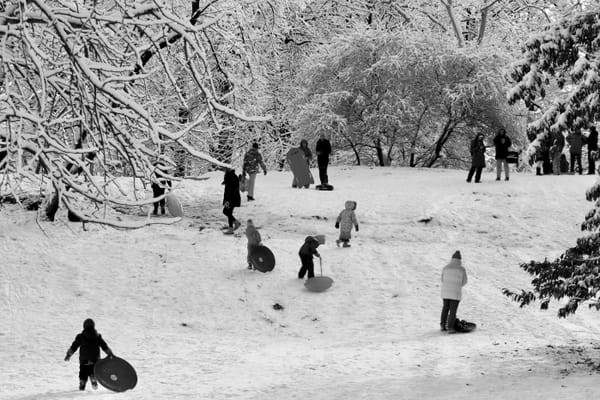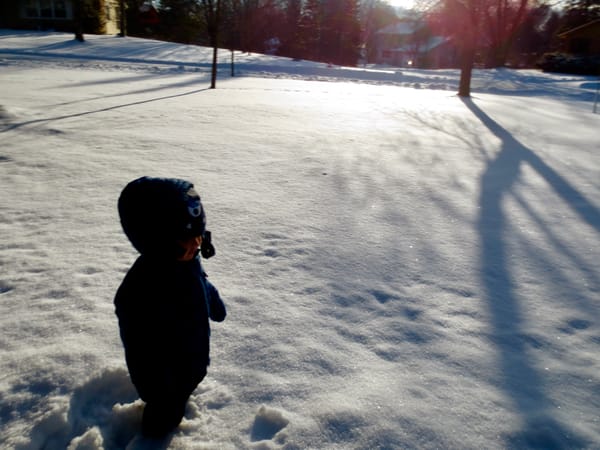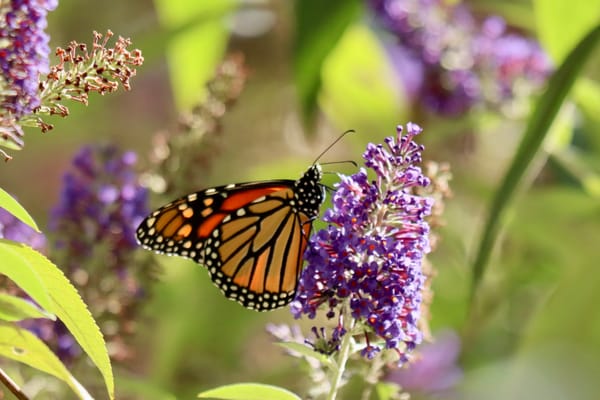What Communal Safety Really Means
Reclaiming language and learning within contexts of care
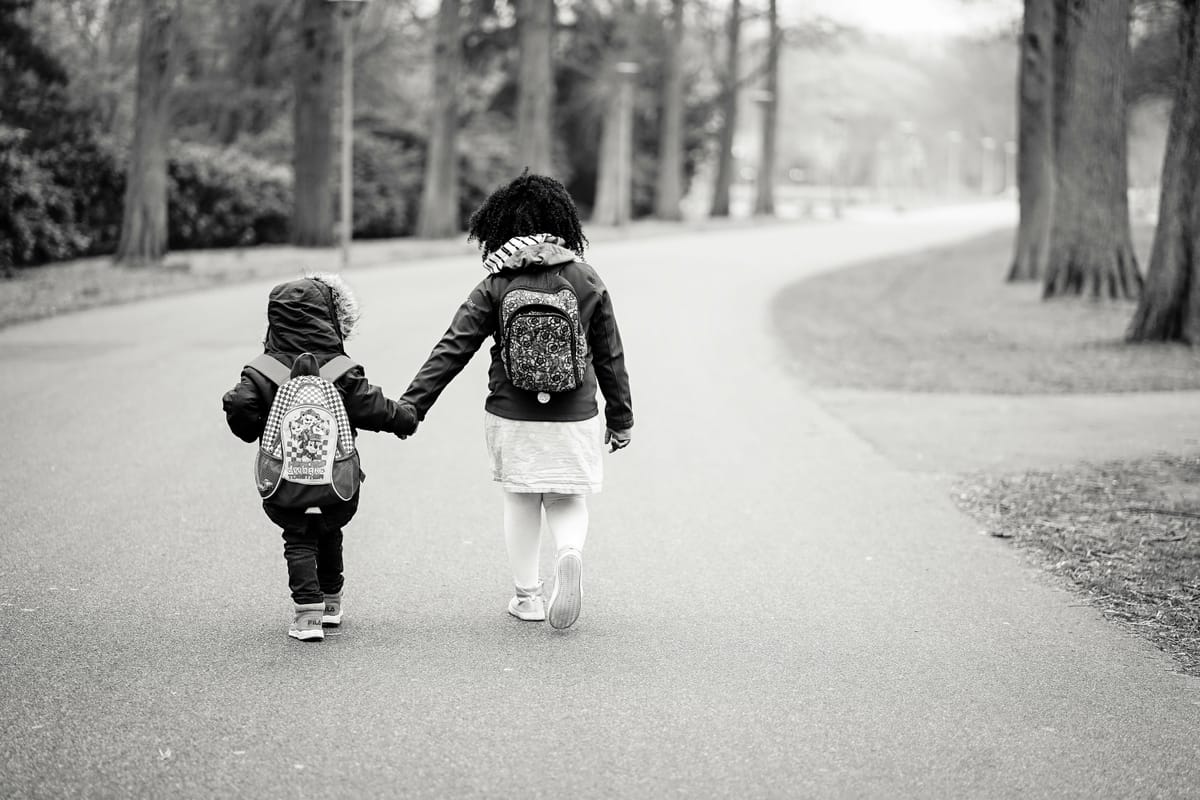
“The story does not end here. It ends
when you stop listening.
You are not alone.
Keep Listening.”
~Max Wallis
It’s an odd time to be a preschool teacher. There are some obvious reasons for this—the dismantling of the Department of Education, the surveillance and regulation of classroom bookshelves and bulletin boards, excluding vulnerable children from early childhood classrooms and healthcare. The list goes on. But, in addition to these headline-worthy stories, it’s also very odd to be part of a profession that is rooted in caretaking in a time when care itself is not only devalued but increasingly villainized.
Though nurturing foundational academic skills has always been a central task of early childhood teachers, preschool is also a site for the development of core social competencies. It is where children make their first friends and learn to be members of a community that extends beyond their home.
The need to defend the relative importance of social skills within an academic context is not new to preschool teachers. But in the past the discourse over social-emotional education has typically centered on whether social skills are integral to academic growth or separate from more formal learning and, therefore, able to be moved up or down a hierarchical ladder of priorities within the classroom. Increasingly, however, the debate is not only about how to prioritize and integrate the development of these relational skills, but whether to value them at all, not only in young children but in the culture more broadly. Even as flags of concern are raised about pediatric mental health and loneliness, traits like empathy, inclusivity, and perspective taking—the keys to connection and the antidotes to loneliness—have become startlingly controversial and are even fireable offenses in some settings.
Long before empathy and inclusivity came under fire as values, though, the definition of safety within the classroom has been a fraught topic, even among educators. And in some ways I think the debate over the role of safety in productive learning environments set the stage for the current attacks on emotional literacy and social competence writ large, while simultaneously opening a door for those with the most social and institutional power to claim a need for protection from the most vulnerable members of society.
The controversy around the notion of safe spaces, though, is rooted in definitional shift. The meaning of safety has morphed over time from referring to an environment that made difficult conversations more possible, by fostering empathy and connection, to an environment that protects against discomfort. With this shift, the function of safety in learning environments has become so murky that it’s increasingly difficult to even define, let alone defend. As a result, there have been some efforts to simply find new words. “Brave spaces,” for example, are essentially a rebranding of the original function of safe spaces.
On the surface, the pivot to brave spaces seems viable. This new language does name the intended outcome of creating contexts where challenging topics can be addressed and grappled with. Perhaps the specificity leaves less room for malleability and conveys greater clarity to both teachers and students—all good things. Sometimes finding more precise language is necessary and useful. But the constant need to adjust language can also be evidence of powerful systems at work, edging us into ever more narrow crevices of expression, and this is what gives me pause, especially within an educational climate that is increasingly dominated by fear.
In a period when students are expected to regularly practice hiding from active shooters, when children are being taken into custody on their way to sporting events, when the parents of trans children feel forced to relocate to different states or even different countries, and when college students fear arrest, I think it is necessary that we reclaim the foundational meaning of safety in its most basic form within educational contexts. And I think early childhood classrooms offer a useful template for reasserting the original intention of classrooms as safe spaces that foster, rather than repress, expression and growth.
The concept of safe spaces is often tethered to early childhood through derogatory descriptions of “coddling” older students with “coloring, blowing bubbles, and sculpting with Play-Doh.” This conflation of safety with young children somehow disparages both the notion of care and the field of early childhood in one breath. And, as a longtime purveyor of coloring, bubbles, and playdough, I’d like a word.
There are important nuances encapsulated within the early childhood classroom when it comes to the way in which safety and care can make space for, rather than limit, rigorous thinking, individual and collective achievement, and even productive conflict. To be clear, I don’t think that every stage of education should look like preschool. Of course, the way students learn should grow and change, as they develop new skills and competencies. But in my experience teaching young children, creating a safe classroom community does not limit rich learning. By contrast, the feeling of personal and relational safety within the classroom can make it possible for children to explore differing voices, express powerful feelings, and take the kinds of risks that stretch academic skills and illuminate new ideas. I’m not advocating for bubbles and playdough at every stage of learning. But I do think there are valuable lessons about the relationship between community care and academics in the earliest years of education that could benefit learning at all levels.

In order to understand how the concept of safe spaces became so tricky—and what lessons a preschool classroom might have to offer—it is first helpful to construct an accurate history of the language. The framing of safe spaces in current social and educational discourse has drastically diluted the historical and academic roots of this concept, rendering it ineffective at best and susceptible to weaponization at worst. But knowing the history can help to reveal the original intent and power.
The concept of a safe space has two lines of origin. It’s not entirely clear how much these sources have informed one another, but both have played a role in how the relationship between safety and learning is framed today.
As a broad concept, safe spaces are a feature of the history of communities that have had limited access to power and have faced significant threats to their physical and cultural survival. The term “safe space” is often attributed more precisely to the queer and feminist activism of the 1960s. However, the practice of creating safe spaces for marginalized and vulnerable groups surely weaves through all of history, as threatened communities have always found ways to shelter one another and to create havens for expression, tradition, acceptance, organization, and activism.
In addition to the deep and wide-ranging ways in which vulnerable communities have always carved out protective enclaves for physical and cultural survival, the notion of “safe spaces” also has a specific origin point in social psychology during the 1940s. Kurt Lewin, a German Jewish psychologist, who emigrated to the United States shortly before WWII, studied group dynamics and the way individual change is entwined with social systems. Near the end of his career, Lewin’s research focused on the role of racial and religious bias, as he examined the environments and communication strategies that allow people to unlearn prejudices. Lewin also studied the role of leadership in fostering cultural change within organizations. His research in both areas provided a foundation for the contemporary application of concepts like safe spaces and sensitivity training within social and employment settings.
Across both the history of vulnerable groups creating protective enclaves, and the psychological research on the role of safe environments in shifting personal beliefs, two themes are essential to keep front of mind in reclaiming the notion of safety as a path toward greater freedom, instead of a tool for repression. First, the notion of a safe space as a cultural construct and a site for activism has roots in very real threats to physical safety, civil rights, and personal dignity, not in mere discomfort. Second, in both contexts, the ultimate goal of creating safe environments is social transformation not stagnation. Culturally, safe spaces for disenfranchised and vulnerable groups nurture both personal and collective power, which, in turn, often makes these spaces fertile sites for larger organizing and movement building that ultimately expands acceptance and rights. And, in the academic and institutional contexts that Lewin examined, the goal of creating safe environments was explicitly to establish contexts in which personal change and learning are possible. The aim of Lewin’s safe spaces was not to avoid discomfort but to make it more possible to navigate through discomfort.
Safe spaces that are inherently liberatory also require that we honestly assess the vulnerability of others and protect each other, rather than using perceptions of personal safety as a tool to further ostracize those who are at even greater risk—the need for cis women to recognize the profound vulnerability of trans people provides one critical present example.

All of these qualities of safe communities that expand freedom and growth, rather than limiting it, are modeled in caring early childhood classrooms. A unique feature of preschool is that it is generally accepted that teachers of young children are responsible for their students’ physical and emotional safety, in addition to their learning. Understandably, this becomes less central to our conception of the role of the teacher as children grow increasingly capable and independent. Of course, teachers of older children still have a responsibility to protect their students’ wellbeing, and in my experience teachers at all levels feel this responsibility deeply. However, as academic rigor takes center stage, and as children develop the ability to meet their own basic needs, manage their own relationships, and take greater responsibility for their own communities, the role of the adult tends to become more overtly focused on academic growth and less on caregiving. While it's appropriate for the relationship between teachers and students to change as children grow, I think this transition can also obscure the way we understand the interplay between community care and deep learning.
Early childhood teachers are keenly attentive to the development of the classroom community and to the dynamics of vulnerability and power. This isn’t to say that teachers of older students lose sight of these dynamics. But preschool teachers are expected to scaffold children’s relationships, and I think this allows us to attend more directly to the connection between vulnerability and learning. When I reflect on the most minute aspects of my day-to-day classroom practice as a preschool teacher, nearly every part of the day was infused with an acute awareness of each child’s strengths, points of fragility, and position within the social web at any given moment.
I was flipping through classroom photos recently, and I was struck by the fact that, even now, I can still recall, within a single photo, why one child was in my lap, why I had my arm draped around another child, and why my eye contact was focused on a third child. It would be easy to group this orchestration of relational gestures under the umbrella of classroom management. But, reflecting back on each child pictured, classroom management feels far too clinical and detached to describe what was actually transpiring. Each gesture was both meeting a need and communicating the importance of doing so to the group as a whole. This dance of caregiving and learning is a constant feature of life in a preschool classroom. And the way we navigate and express this dance doesn’t just serve to meet individual needs. It also signals the importance of communal care to every student in the room. The teacher's gestures reinforce the significance of the way we care for each other in the context of the way we learn.
Over the course of a preschool year, when teachers manage this dance thoughtfully and consistently, the children begin to take increasing responsibility for each other and for their learning. Their own mutual care allows a wider range of voices to contribute to classroom conversations and to be heard and internalized with sincere consideration. As communal knowledge and care develop, it becomes easier to raise topics that are academically or emotionally challenging. The threshold for tolerating discomfort and disequilibrium increases as the classroom community becomes more connected, more caring—and, yes, safer. When confusion, frustration, and even fear, sadness, or anger can be held collectively, rather than individually, it becomes more possible to broach challenges and differences. This is the outcome of creating true relational safety.
Ironically, many of the strategies I’ve just described for creating a sense of communal safety that facilitates deep and challenging dialogue, are mirrored in the teaching strategies that purport to reject safe spaces—an indication of how the meaning of safety has morphed. For example, Professor David Sterling Brown explains how he fosters what he describes as “productive discomfort,” while making an argument against the notion of safe spaces in education. But his techniques are very similar to those I employed as a preschool teacher. He says,
“When different identities and personalities meet in a classroom, the potential for friction is high. To manage those frictions, I need to know my classroom audience. So, I observe my students’ verbal and nonverbal cues. These include their classroom interactions, their choice of seat, their tone of voice and body language, and whose contributions they respect or dismiss. This information helps me to see my students as, in [bell] hooks’ words, ‘whole human beings with complex lives and experiences rather than simply as seekers after compartmentalized bits of knowledge.’
In a classroom full of whole beings with diverse lived experiences—including painful encounters with racism, sexism, misogyny, transphobia, homophobia, Islamophobia, antisemitism, poverty, and other forms of violence and abuse—productive discomfort resists guaranteeing everyone’s emotional safety, including my own.”
From an early childhood lens, I would say that what Brown is describing here actually does fit the description of a safe classroom space beautifully, despite his resistance to the language of safety. Preschool classrooms are full of tears and hurt feelings. Early childhood teachers and young children both know that having a strong feeling doesn’t mean you aren’t safe, and reinforcing this to children is one of the preschool teacher’s most central tasks. You are safe because you are cared for—even when your emotions may seem overwhelming—not because you are protected from having those feelings at all. Communal safety, which facilitates challenge and growth, even in the face of rupture, is precisely what Brown has established by attending so closely to his college students’ cues and taking their lived experiences into account in his classroom.
The physician, Gabor Maté, citing the nervous system theories of the psychologist, Stephen Porges, notes,
“Safety is not a question of the lack of threat; safety is the presence of connection.”
Early childhood teachers constantly scaffold, model, and offer connection. And in doing so we create environments in which diverse voices can be heard, difficult topics can be grappled with collectively, and emotions can be expressed and managed. The connection between the safety that is established through classroom relationships and the depth of learning that is possible as a result is direct and palpable.
It was never the content that was meant to be “safe.” It was always the relationships. Secure, connected, caring relationships facilitate complex, challenging, transformative conversations. Real safety isn’t created by restricting content or limiting the topics we are permitted to raise. Safety is created by establishing caring relationships and a sense of community, which fosters, rather than represses, growth and learning. This form of safety remains valuable and worth naming clearly and honestly.
Safe, connected communities foster courageous conversations and expansive thought. And given the very literal ways in which classrooms are increasingly unsafe for so many children, I think it is important that we reclaim the central value of relational safety as a catalyst for bravery, rather than simply renaming the techniques educators use to create an impression of moving safety out of our purview.
As Gwendolyn Brooks reminded us,
“We are each other’s
magnitude and bond.”
What better place to learn this than in the classroom.
Wishing you the safety of connection and the courage to provide safe spaces to others,
Alicia
A few things I found helpful and hopeful this week…
- An infectious disease researcher's perspective on why protecting the most vulnerable is the only way to protect everyone
- A lovely tribute to Jim Lovell from Charlotte Clymer
"It feels like a stunner wrapped in a phenomenon inside nesting dolls of miracles. But it wasn’t really about miracles. It was thousands of hours of training and enormous grit and profound teamwork and exceptional leadership."
